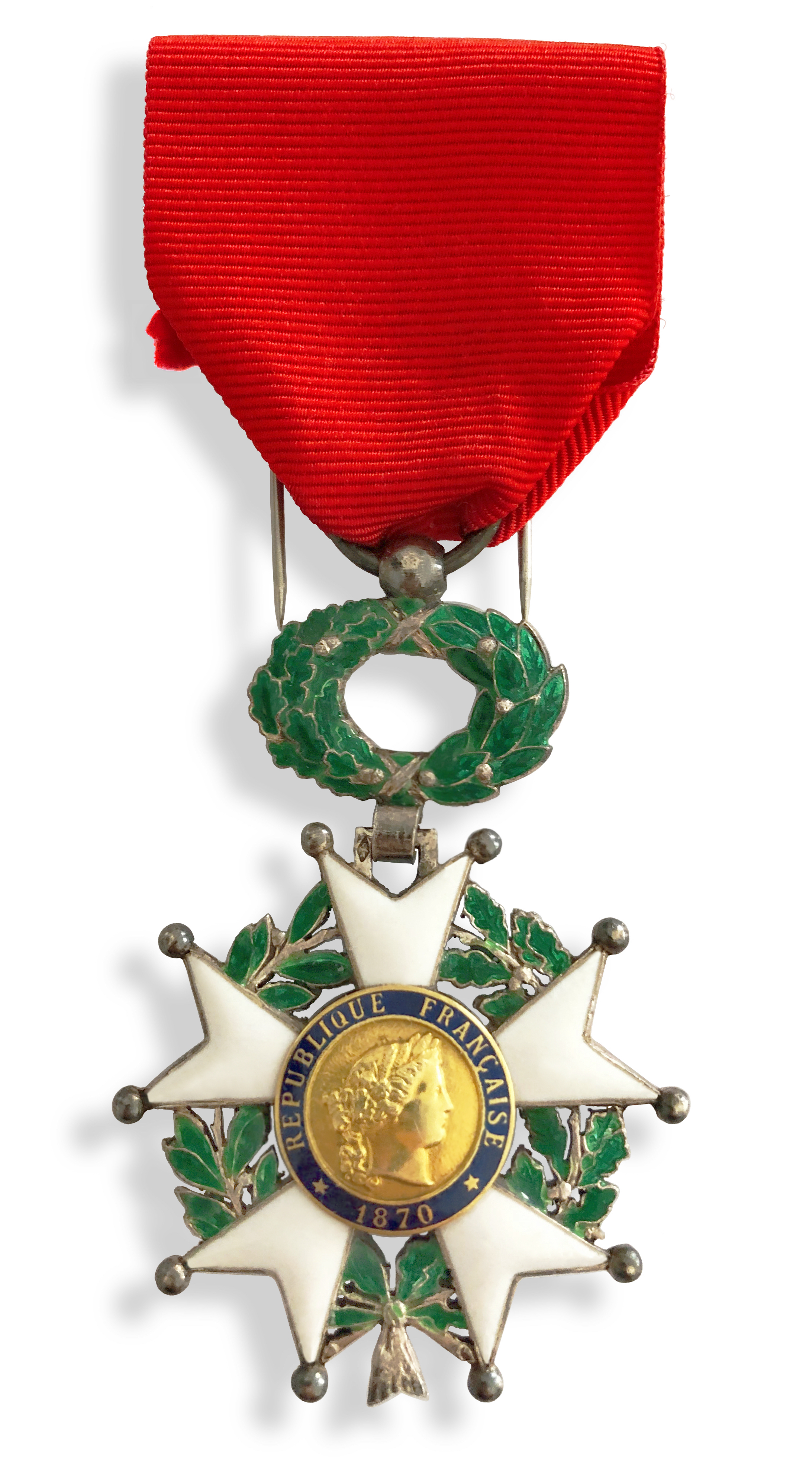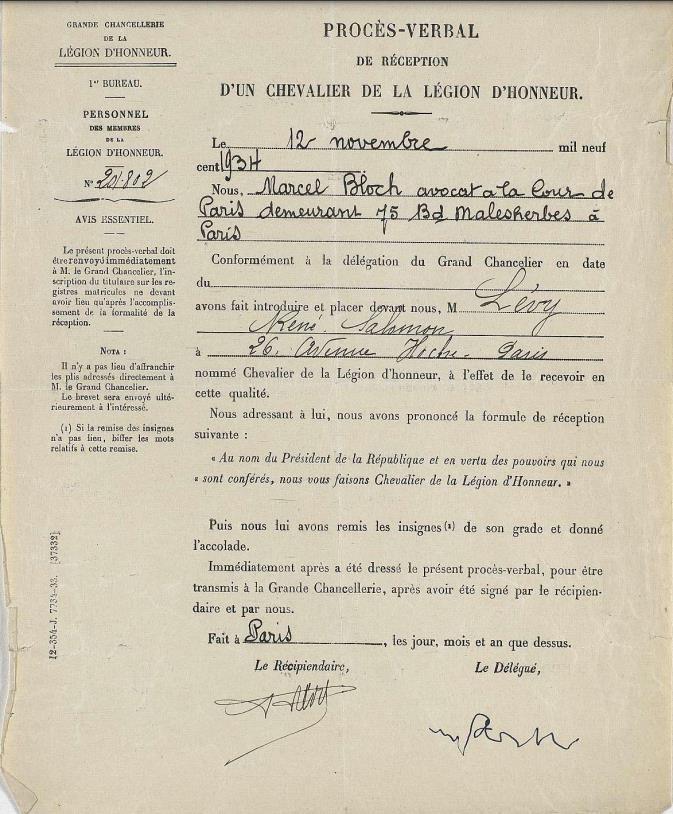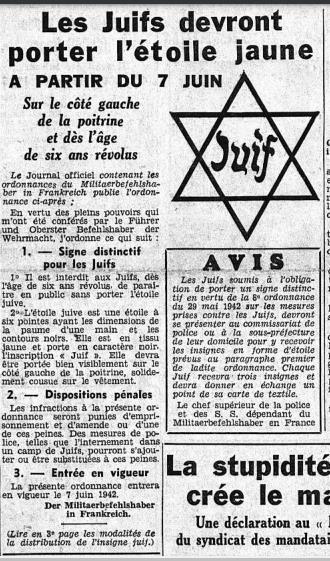René LÉVY
René Salomon Lévy was born on August 27, 1876 at six o’clock in the morning at his parents’ home in La Neuveville-lès-Raon, in the Vosges department of France.

Source : Wikipedia
René was the son of Prosper Lévy, who was a livestock trader, and Rosine Londonchutz, who did not work. They were 39 and 32 years old respectively when he was born.
René got married on April 29, 1921, to Germaine Henriette Weill. The wedding was held at the town hall of the 10th district of Paris. This marriage ended in a divorce, and we have found no further information about Germaine Weil.
René then married Hilda Adrienne Wade on March 11, 1931 in Paris. He was then 54 years old and his new bride was 40. They were married at 11:00 a.m. in the town hall of the 8th district of Paris. A few days earlier, on March 6, a notary named Constantin had drawn up a marriage contract.
Hilda Wade, René’s second wife, was born on July 28, 1890 in the London Borough of Chelsea. She was English and her parents, Somerset Wade and Adrienne Chapland, lived at 46 King’s Road. Hilda’s family probably came from a privileged background since her father lived on rental income alone, and Chelsea was one of the most exclusive and prestigious areas in London at the time.
The post-war records about both of René’s marriages say “Number of living children of the non-returned person: none“. We have therefore concluded that he had no children from either marriage or, if he did, perhaps that they were not fortunate enough to live for very long, so they are not listed anywhere.
René Lévy led a busy professional life and had the opportunity to work in several different fields during his long career.
First of all, although he began his military service in 1896, he was discharged because his brother died in the line of duty. However, when the First World War broke out in 1914, he enlisted on September 14. The Battle of the Marne, which took place from September 6 to 12, may have prompted him to sign up even voluntarily though he was exempt from military service. René then served in the army as a from November 28, 1914 to May 5, 1916. He was most likely seriously wounded because he was permanently discharged on the grounds of invalidity. He was 38 at the time.
René then returned to his civilian life in business and real estate. His career had begun well before the war and he was rewarded in 1909 with the title of Chevalier du Mérite Agricole (Knight of Agricultural Merit), followed by the title of Officier du Mérite Agricole (Officer of Agricultural Merit) on 31 August 1928. At the age of 58, on July 21, 1934, he was made a Chevalier de la Légion d’Honneur (Knight of the Legion of Honor) for his work as a company director in Paris. Marcel Bloch, a Parisian lawyer, presented him with the insignia of the rank and gave him the accolade saying “In the name of the President of the Republic and by virtue of the powers conferred upon us, we appoint you a Knight of the Legion of Honor”.

Knight’s Cross of the National Order of the Legion of Honor, 3rd French Republic design
This image from Raider9564 is licensed under a Creative Commons Attribution-Share Alike 4.0 International License

Before becoming a director of several companies, at 1, rue Paul Cézanne in Paris, he was a real estate broker and also a board member of the Colombian Chamber of Commerce for two years. We also discovered that he was involved in a totally different line of work: he was the approved auditor of the Aeroclub of France, which was a very innovative enterprise at the time.
René was also involved in a number of philanthropic activities during his life. He was a member of the board of the Hospices Civils de Reims (Civil Hospices of Reims) between 1907 and 1914. These various interests reveal an educated, cultured and very dynamic professional figure.
Then came the dark days of the Second World War and the occupation. In 1940, the German authorities ordered all French Jews to take part in a census and in June 1942, they were required to wear a yellow star.

Source: Le Matin N°21191, Monday, June 1, 1942, gallica.bnf.fr/National Library of France
The Gestapo was in charge of searching and arresting all Jews, firstly in the occupied zone and then throughout the country. Thousands of Jews were arrested and imprisoned in transit camps in France such as La Cité de la Muette in Drancy, prior to being deported to the killing centers.
On June 6, 1944, when the Allied forces landed in Normandy, the German troops were forced to retreat. In light of this debacle, Aloïs Brunner, who was in charge of the Drancy camp, decided to arrest all the Jews that the German authorities could find, in order to fill up one last convoy.
It was during this period of widespread round-ups that René was arrested on “racial grounds” in the offices of the company where he was working as a real estate broker. At that time, René was still living at 26, avenue Hoche, in the 8th district in the heart of Paris, just a few blocks from the Arc de Triomphe. The company where he was working was very close by, in the same district, at 6, rue Arsène Houssaye.
When the Gestapo burst into the offices during the afternoon of July 10, they were looking for a missing Jew. They arrested René, who was “present and wearing a yellow star”. Two witnesses were there at the time of the arrest; Madame Odette Heuriot, who lived at 38, avenue Simon Bolivar in the 19th district, and Mr. André Bréard, who lived at 2 bis, rue Chevreul in Saint Maur des Fossés. It is not explained why they were there, but perhaps they were René’s colleagues or clients.
René was just in the wrong place at the wrong time, as the Germans, unable to find the person they had come for, took René in order to follow the orders they had been given.
René was immediately interned in Drancy camp with the registration number 24987. On July 31, 1944, he was deported by the “last train” from Paris, Convoy No. 77, to Auschwitz.
The records that we have in our possession do not tell us whether René survived the journey in the cattle car. However, if he did, since he was almost 68 years old, sadly he could not have avoided being selected to die in the gas chambers.
After the war, the date on which the people selected to be murdered was arbitrarily determined to be August 5, 1944. The trains took three days to travel from Drancy to Auschwitz and we know that the German authorities executed the deportees within hours of their arrival.
In 1946, his wife Hilda began the administrative formalities required by the French authorities to have René recognized as having been a “political deportee on racial grounds”. Her efforts were finally rewarded in 1962.
Sources
- The records gathered by the Convoi 77 non-profit organization: https://convoi77.org/
- The digitized archives of the Vosges Department Civil Registry: https://recherche-archives.vosges.fr/archive/recherche/etatcivil/n:2
- The digitized archives of the Paris City Hall Civil Registry: https://archives.paris.fr/r/284/etat-civil-a-partir-de-1860/
- The Léonore database of the French National Archives: https://www.leonore.archives-nationales.culture.gouv.fr/ui/
- Les Wikipedia – Page on La Neuveville-les Raons: https://fr.wikipedia.org/wiki/La_Neuveville-lès-Raon


 Français
Français Polski
Polski










